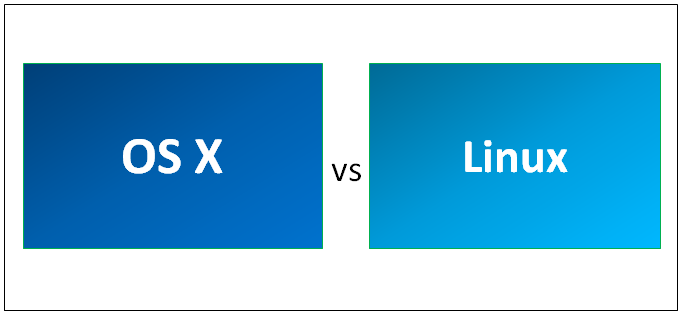
Linux mac os x full#
Modify top command to print the absolute path in its output.Īfter running top, press “c” to display the processes with full path and arguments.Ĥ. You can enter the PID of your choice and provide 15 as the signal value. It’ll prompt you for the process ID and ask for the signal to kill. Kill a process while running the top command. USER PID %CPU %MEM VSZ RSS TTY STAT START TIME COMMAND

Print the top 10 processes consuming a lot of memory. Additional Linux commands to isolate memory issues.ġ. The top header in its output shows the CPU usage, RAM and swap statistics. And it provides several other options and details along with displaying the memory usage. For example, press “a” letter to sort process with PID (Process ID). Press (Shift+O) to select a column via field letter. Most of the time, you can verify the process consuming resources by looking at the or the columns in the top output. Then, you should use top command to determine the process responsible. If you are in a situation, where the memory usage is between 90-100%. But you need not be a root user to run this command. It reverts with the memory usage in the same way as the command does. You need root or access to run this command. The “-m” option returns the usage data in MB format.Īnother way to quickly check the memory consumption is by printing the command. It’s the most frequently used command to track memory usage on Linux. Terminal Commands To Check System Memory. 50+ Terminal Commands – Linux/OS X Users.ġ. Miscellaneous Commands for Quick Reference. Commands To Configure Terminal & Screen.Ħ. Commands To Check on Running Processes.ĥ. Here is the table of content for quickly browsing through the terminal commands.ģ.

See the manpage for Bash for more information about the differences between login and non-login shells. OS X terminal runs a login shell, and so the start up file may be ~/.bashrc, ~/.bash_profile, ~/.bash_login, or ~/.profile. Edit your Bash startup file in your favorite text editor.If you prefer to just test in your current terminal, execute the commands directly in a terminal. To persist the PATH to Dakota across terminals/sessions, make the following changes to the appropriate shell login script. Note, however, that some examples will require modification to work properly if dakota and related helper programs are not on your PATH. If you prefer you may refer to the dakota executable using its fully-qualified path. The following setup will make the dakota command and other helper programs available at the terminal. usr/bin/which: no dakota in (/usr/local/bin:/usr/local/sbin) If your PATH variable is NOT set correctly, you will get a message like the following: path/to/dakota/install/directory/bin/dakota If your PATH variable is set correctly, the path to the dakota binary should be displayed.
:max_bytes(150000):strip_icc()/screenshot_20190811-145852_1366x768-6e49cebdf39642a1a53c621c094b16c1.png)

Make sure Dakota executables (and optionally test files and current directory) are available on the PATH by typing 'which dakota' at command line prompt.
Linux mac os x install#
In the instructions below, $INSTALL_DIR refers to the path to the new install directory, /path/to/dakota/install/directory/Dakota.


 0 kommentar(er)
0 kommentar(er)
